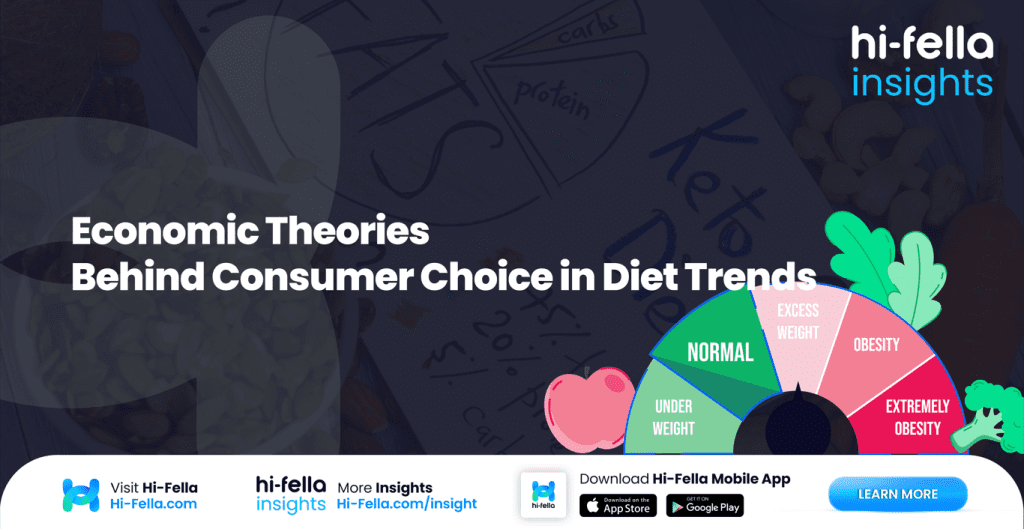Let’s face it: kale didn’t become a superstar overnight, and gluten-free wasn’t always on every café menu. Behind every trending diet is a web of economic theories that help explain why consumers gravitate toward certain foods. So if you’ve ever wondered why your friend suddenly swears by intermittent fasting or why oat milk reigns supreme in hipster coffee shops, you’re about to get answers—with a little help from economics.
Utility Maximisation: Chasing Satisfaction One Bite at a Time
In classical microeconomics, the theory of utility maximisation posits that consumers aim to make choices that give them the greatest personal satisfaction or benefit. This utility isn’t just about tangible outcomes—it can be physical, emotional, social, or even symbolic. When new diet trends like keto, paleo, veganism, or Mediterranean eating patterns enter the mainstream, they offer consumers a perceived increase in utility across different dimensions. It’s not just about losing weight; it’s about feeling better, looking better, being perceived better, or even aligning one’s choices with personal values.
Let’s take the rise of plant-based diets as an example. For some consumers, the utility lies in improved health outcomes—lower cholesterol, better digestion, or more energy. For others, the utility is ethical—avoiding animal cruelty—or environmental—reducing their carbon footprint. Then there’s social utility: being part of a growing movement, fitting in with peers, or earning approval in socially conscious circles. Each of these benefits represents a different kind of payoff, and consumers choose based on which combination brings them the most value.
What’s fascinating is how these perceived benefits are often constructed through a combination of personal experiences and external messaging. Media coverage, influencer endorsements, and even documentaries like “Game Changers” or “Forks Over Knives” elevate the perceived utility of certain dietary lifestyles. People don’t just switch for health reasons—they’re buying into a story that enhances their identity and self-concept.
Moreover, utility maximisation explains why different consumers might interpret the same diet trend in different ways. A fitness enthusiast might see keto as a path to peak performance, while someone else views it as a shortcut to fast weight loss. This subjective valuation of utility reflects personal goals, needs, and life stages, making diet choices deeply individual.
Ultimately, utility maximisation is not a one-size-fits-all concept. It’s the invisible hand guiding food choices in a world of ever-evolving trends, where satisfaction is measured not only by how good a meal tastes—but by how well it aligns with health aspirations, ethical beliefs, and social signals. That’s pure utility in action.
Bounded Rationality: We’re Not Perfect Decision Makers
Consumers don’t always make the “rational” choice. Enter the theory of bounded rationality, which acknowledges our mental shortcuts, biases, and limited information. Diet fads often spread through social media, not peer-reviewed journals. A slick influencer video or viral TikTok might influence someone’s diet choice more than scientific evidence ever could.
For example, celery juice became a morning ritual for thousands based on anecdotal claims rather than solid nutritional science. This is where psychology meets economics—and where we start to see the limits of rational consumer behaviour.
Signalling and Social Capital: Flexing Through Food
Diet trends often function as signals—subtle (or not-so-subtle) ways of conveying information about identity, wealth, and values. Economic signalling theory helps explain why someone might choose organic, artisanal kombucha over a regular soda. It’s not just about taste or health; it’s about projecting a certain lifestyle.
Food choices can serve as social currency. Being gluten-free at a startup office lunch might say more about your awareness and discipline than your dietary needs. These choices generate social capital, which in many cases can be as valuable as financial capital.
Network Effects and Herd Behaviour: Everyone’s Doing It
Economics also gives us tools like network effects and herd behaviour to explain why diet trends explode. If more people adopt a trend, its perceived legitimacy and value increase. As the keto diet gained traction, more brands introduced keto-friendly products, reinforcing consumer behaviour through availability and social proof.
This herd effect isn’t necessarily bad—it can bring attention to previously overlooked health issues—but it also means diet choices may be driven more by popularity than personal or nutritional relevance.
Price Sensitivity and Elasticity: Can You Afford to Eat Clean?
Not all consumers have the luxury to follow trending diets. Economic theories around price elasticity help explain the varied adoption rates across demographics. A gluten-free diet, for instance, can be significantly more expensive. If demand for certain diet products is price elastic, small price changes can greatly influence consumer choice.
That’s why diet trends often start among higher-income groups before diffusing more broadly—if they ever do. It’s not just about preference; it’s about purchasing power.
Behavioural Nudges: Structuring Choices Subtly
Governments and companies often use behavioural economics to nudge consumers toward healthier eating. Placing fruits at eye level in supermarkets or using colour-coded nutrition labels are examples of “choice architecture.”
This subtle manipulation of the decision-making environment shows how economic tools can shift consumer behaviour without restricting freedom of choice. It also explains how some diet trends can go mainstream simply because the environment makes those choices easier or more appealing.
The Role of Marketing and Information Asymmetry
Lastly, marketing plays a massive role in shaping diet choices. Economic theory around information asymmetry suggests that when sellers know more than buyers, they can influence demand through strategic messaging. Think of how “superfoods” are branded—chia seeds, goji berries, or acai were virtually unknown until marketing campaigns framed them as miracle ingredients.
This imbalance allows producers to charge a premium and shape consumer perception, even when the nutritional benefits may be similar to less exotic, cheaper options.
Consumer choice in diet trends is far from random. It’s a fascinating interplay of economic theories, from utility maximisation to herd behaviour, all coloured by cultural context and psychological bias. So the next time you see someone reaching for an oat-milk matcha latte or raving about carnivore diets, know that behind that bite is a world of economic reasoning.
Join Hi-Fella and Expand the World!
And hey, if you’re feeling fancy, go ahead and grab that activated charcoal smoothie. Just know your inner economist is quietly analysing your decision. If you’re a supplier or a buyer navigating the world of food trends and consumer choices, consider joining Hi-Fella—a platform where smart sourcing meets informed demand.
Hi-Fella connects suppliers and buyers through seamless online exhibitions, providing opportunities to showcase products, discover new trends, and build meaningful partnerships. Whether you’re launching a new health product or looking to source ingredients for the next big dietary movement, Hi-Fella is where connections spark and ideas grow. Join the community that’s shaping the future of food, one trend at a time.








